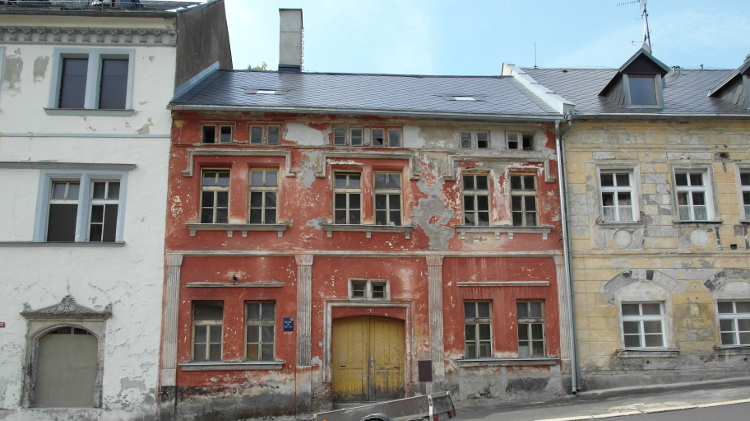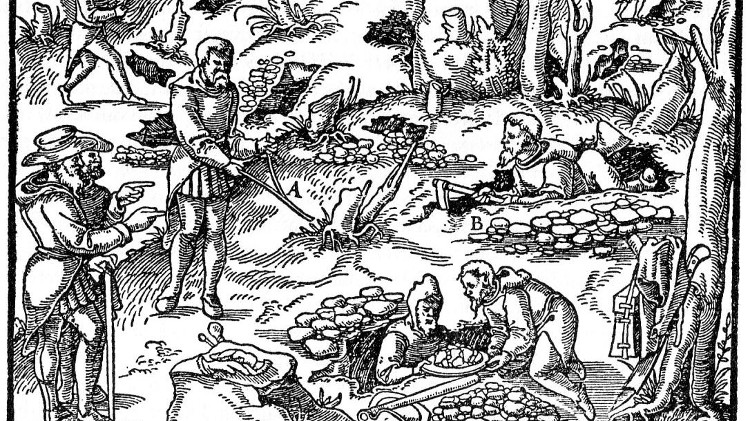Three Ontario Provincial Police officers pose with silver ingots recovered from high-grading operations. Most high-graders were either acquitted or given light sentences. Courtesy of the Cobalt Mining Museum
During the first few years of the silver mining rush in Cobalt, Ontario, mine owners had a laid-back approach to loss prevention. With claim to so much high-grade ore, they freely gave samples of silver to visitors. Mine workers were also not searched at the end of the day and it was easy for the men to slip pieces of silver into their pockets.
The local newspaper, the Nugget, estimated that $1 million worth of high-grade silver had been stolen in the first five years of the Cobalt mining camp. Although several arrests were made at the time, it was almost impossible to obtain a conviction. A mine manager had to swear the stolen ore came from his mine, but since high-grade silver was consistently pure at each project it was impossible to identify what ore came from which mine. The thieves had to be caught red-handed to be successfully prosecuted. Most “high-graders,” as they were called, were either acquitted or given light sentences.
Prior to the discovery of silver in Cobalt in 1903, Ontario had not been a precious metal-producing province and there were few specific laws to protect a mining company’s private property, i.e. its ore. As the number of high-grade ore thefts mounted, authorities sought a solution to the problem. In April 1908, John Cartwright, the attorney general of Ontario, wrote to federal justice minister Allen Aylesworth regarding the situation, and in June Cartwright suggested amending the Criminal Code to require those in possession of silver to have proof of ownership, but the federal government took no action.
RELATED: Scheming brokers, including a famous author's son, deceived many speculators during the Cobalt, Ontario silver rush
Then in December 1909, there was a high-profile robbery at the Nova Scotia Mining Company’s mine in the Cobalt camp. One man, a go-between for the robbers, admitted to having taken 17 trips in the previous few months to a small private smelter in Toronto, each time carrying 45 kilograms (kg) of ore. The thieves received only a small fine because the mine owner could not swear the ore found in the thieves’ possession was his. The general practice, it was revealed after the infamous heist, was for mine site drillers to leave small amounts of high-grade ore in the tunnels for the muckers, who stored it in a prearranged place. Fences would take the ore to Toronto in 100- and 150-pound lots.
A year after the robbery, a delegation including town Mayor H.H. Lang, Coleman Township Reeve Arthur Ferland, Presbyterian minister J.D. Byrnes, and Catholic priest Father James Forget travelled to Ottawa early in 1910 to lobby the Senate, where a bill to make prosecuting high-grading easier and strengthen punishments, created in response to the heist, had been held up in committee.
The Senate subsequently made several amendments to the Criminal Code, requiring all buyers and sellers of silver ore to have written permission from a mine manager for each transaction. This put the onus of proof on the defendant, who could be punished with a maximum penalty of two years imprisonment.
The Temiskaming Mine Managers Association (TMMA) decided to take matters into its own hands and hired private detective agencies to infiltrate the town’s lower strata. In July 1912, for example, George Williams of the Pinkerton International Detective Agency, helped the police seize 110 kg of silver and arrest three high-graders.
Since liquor consumption was illegal within five miles of an operating mine, numerous illegal establishments sprung up in Cobalt to supply alcohol to thirsty miners and citizens. Termed “blind pigs” for what the drinks did to their customers, these speakeasies (often pool rooms or soft drink parlors) sometimes worked closely with high-graders, shipping stolen silver ore to Toronto and returning north with alcohol. In some cases, the high-graders did their planning and recruiting in the blind pigs. Business was very lucrative and allowed the blind pigs to meet the increasingly heavy liquor fines.
As the amount of available high-grade ore diminished, thieves erected small smelters in the area to purify the silver before shipping it elsewhere. As Canadian authorities quickly learned, high-grading operations were no longer limited to Toronto. Two men, arrested months apart in 1911 and 1912, were caught shipping stolen ore across the border, to cities including New York, Philadelphia, and Denver. Subsequently, the TMMA asked the Ontario attorney general to talk with his American counterpart in New York about providing better supervision of the border and acquainting American custom officials with the crime of high-grading. In exchange, the Ontario police promised the American customs officials $1 per pound of silver ore “in every case where we get our man.” Although this reward system achieved some results, high-grading continued until the ore petered out.
Douglas Baldwin is a retired history professor from Acadia University, Nova Scotia. This piece has been adapted from his new book, Cobalt: Canada’s Forgotten Silver Boom Town (Indigo Press, 2016).




